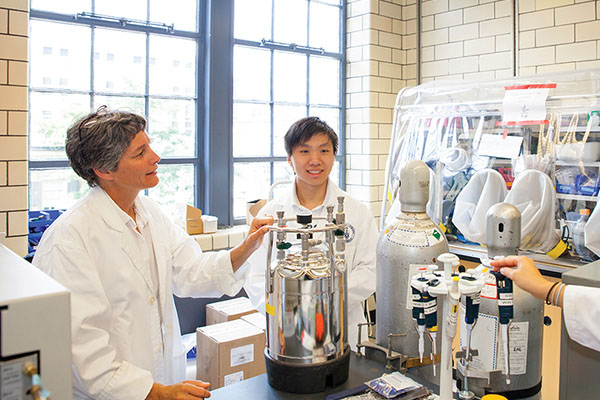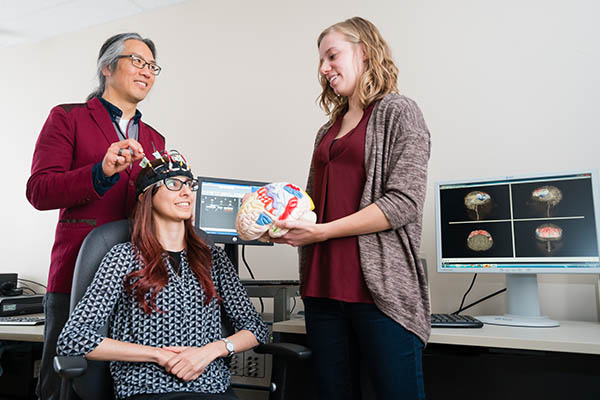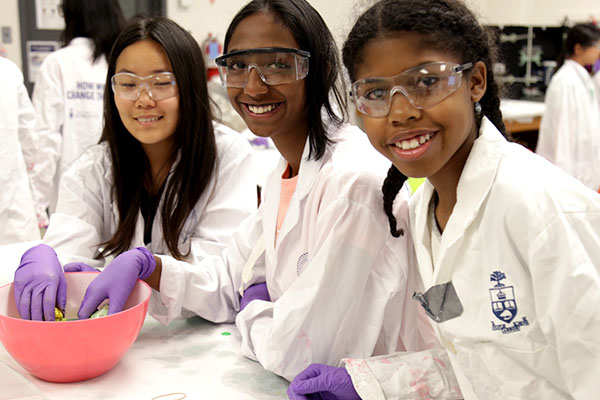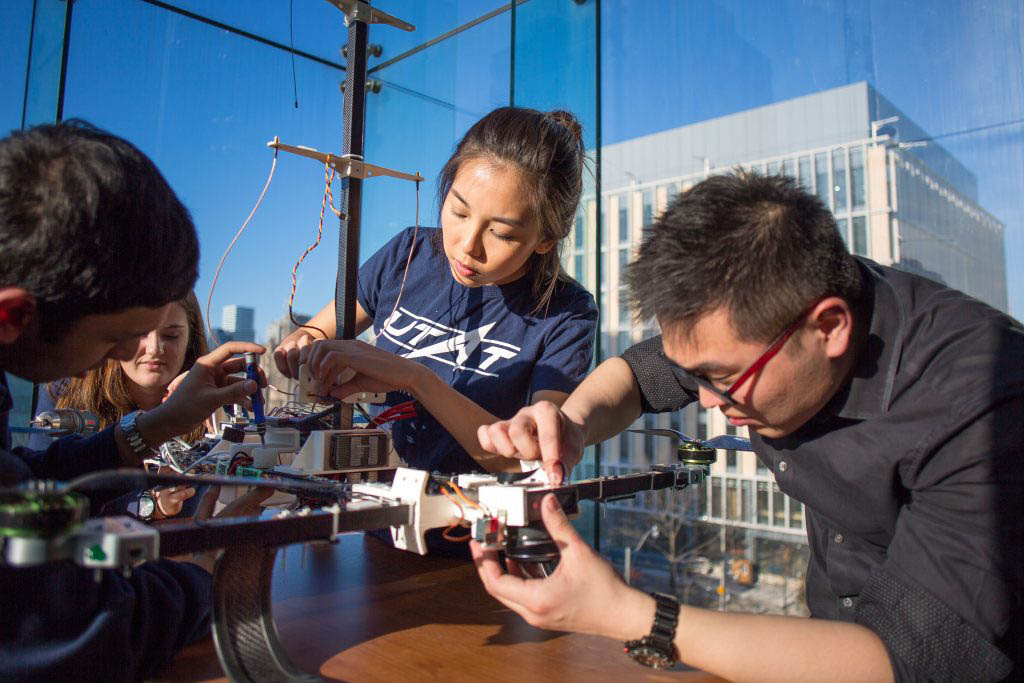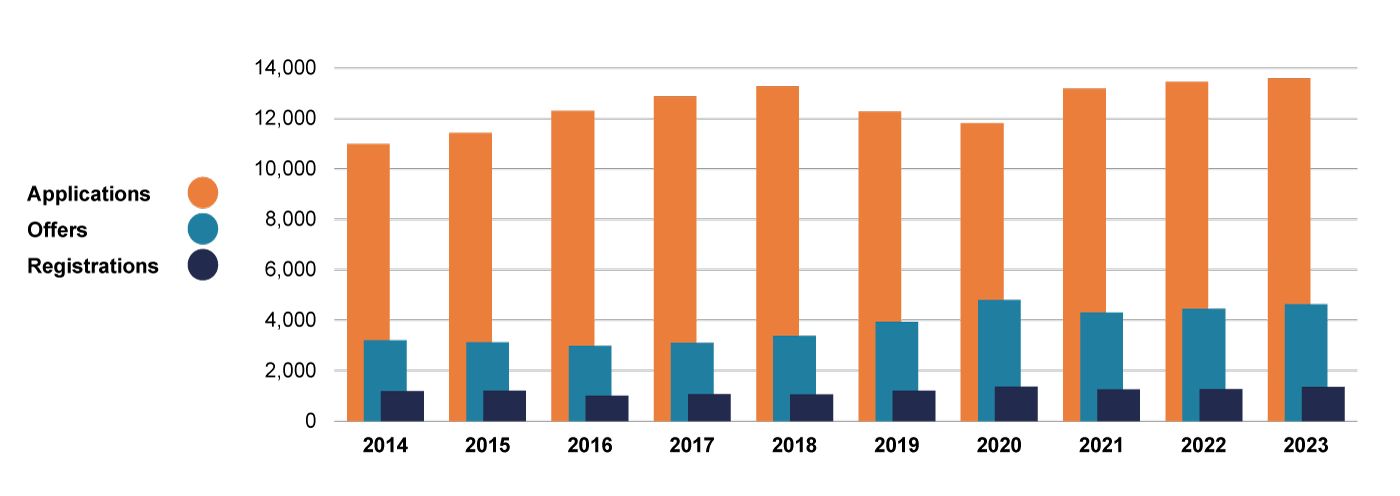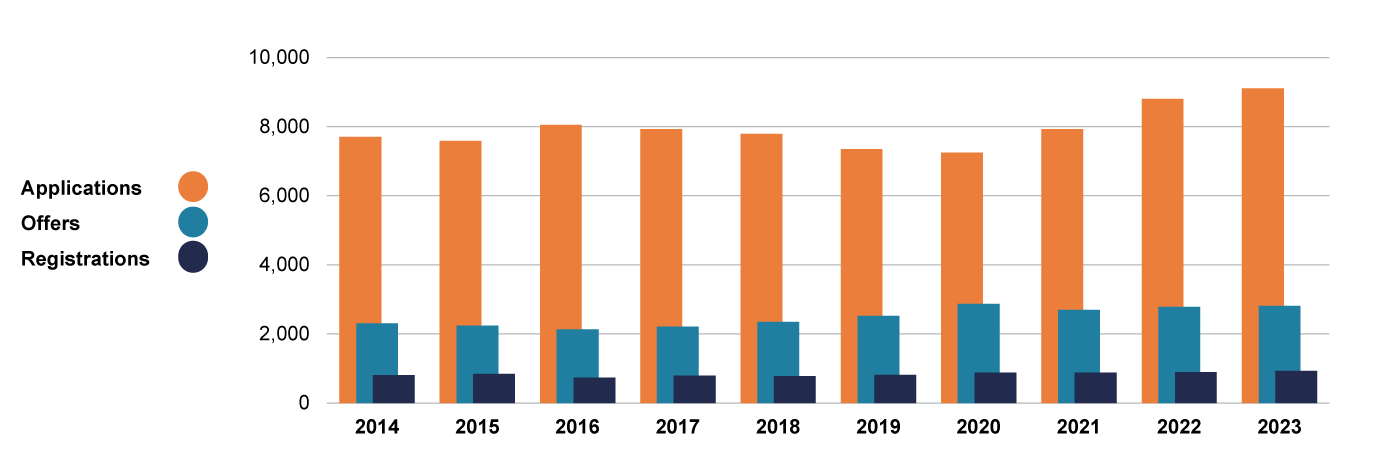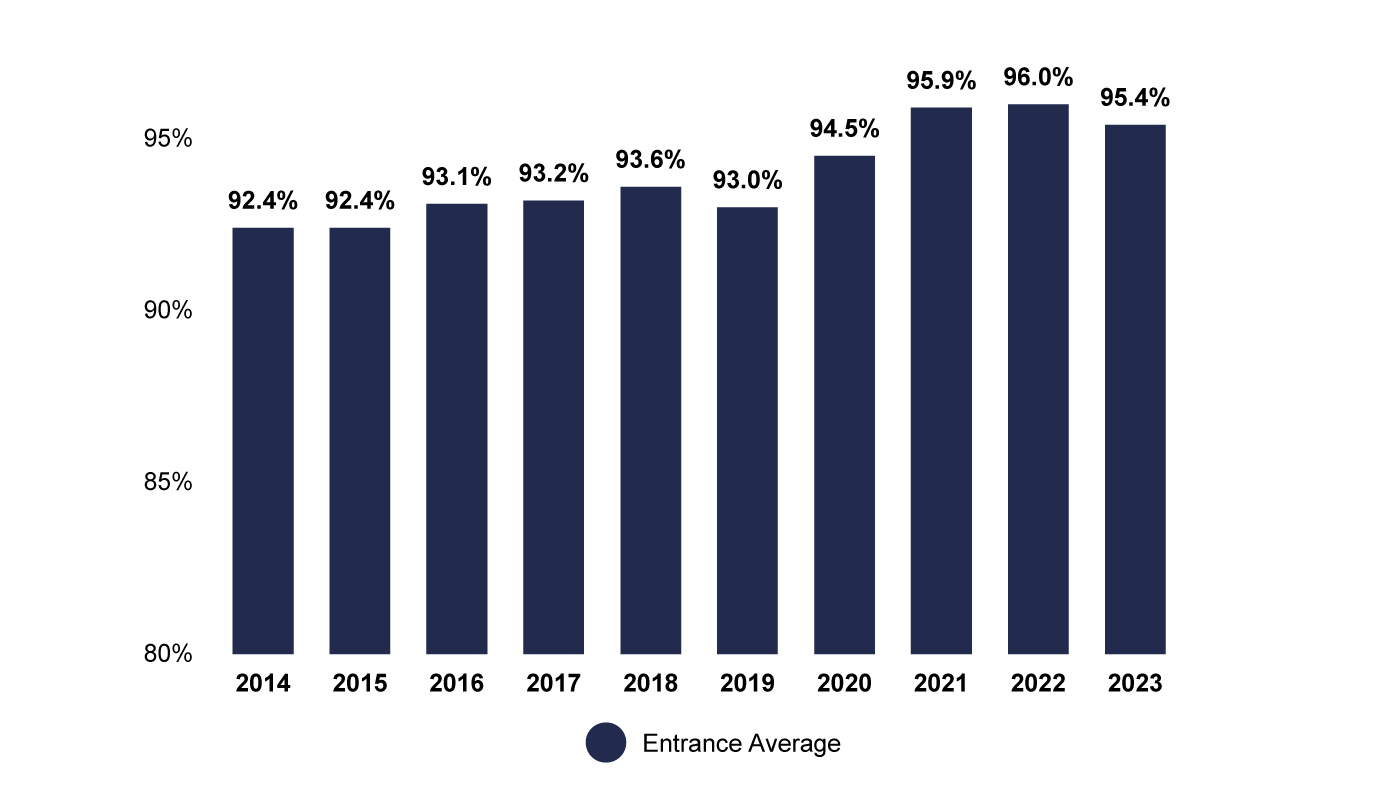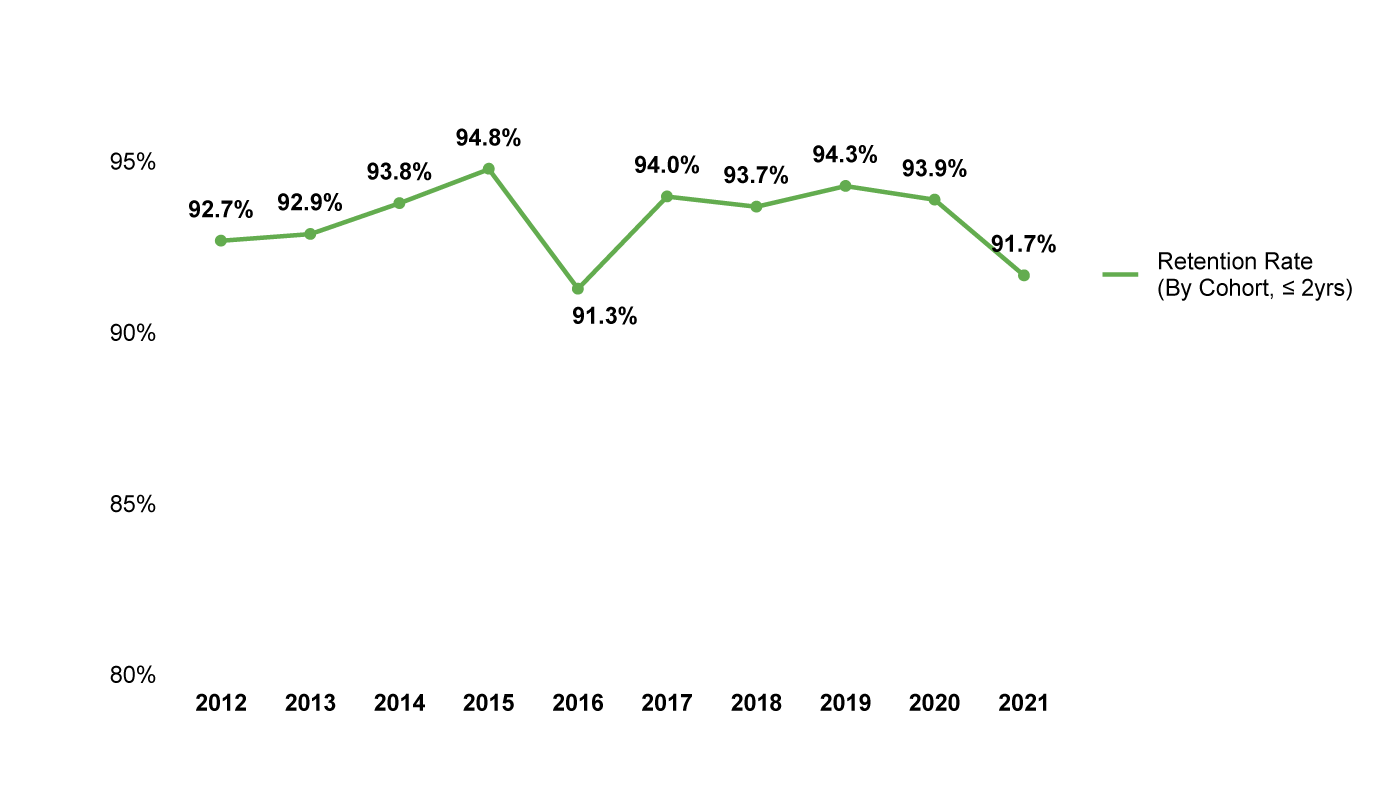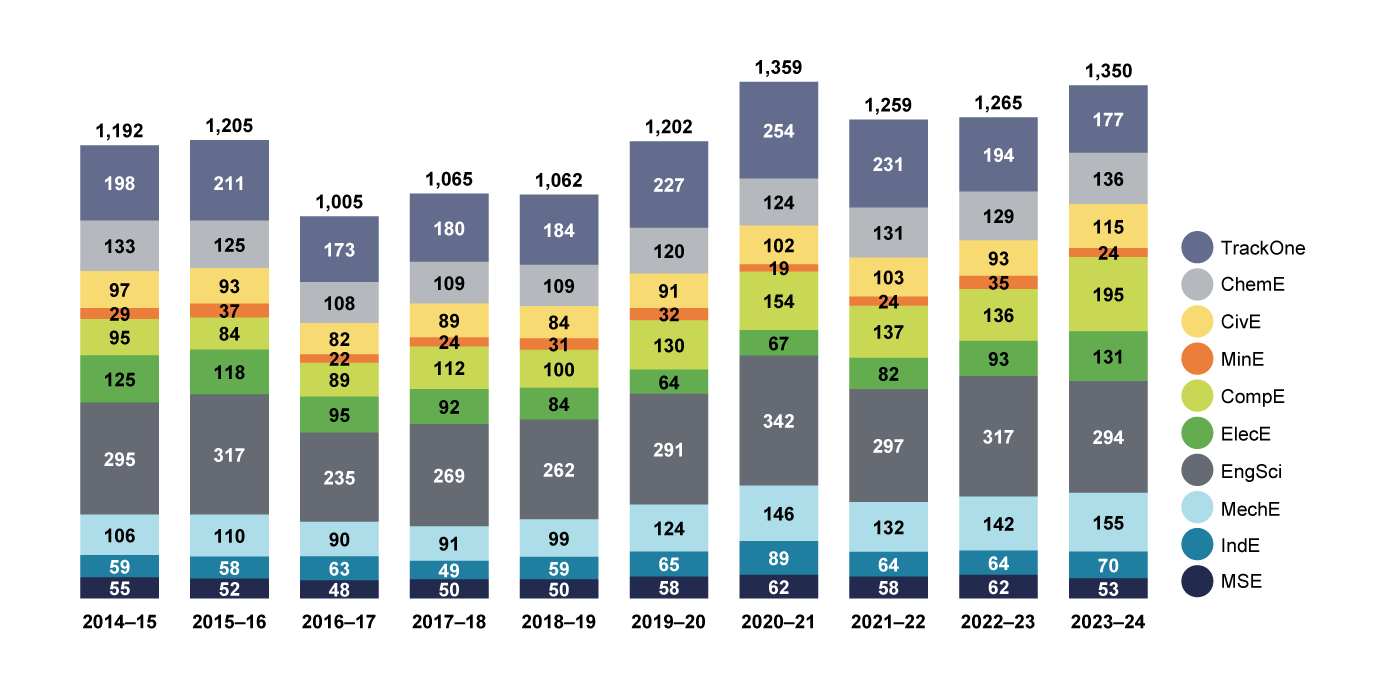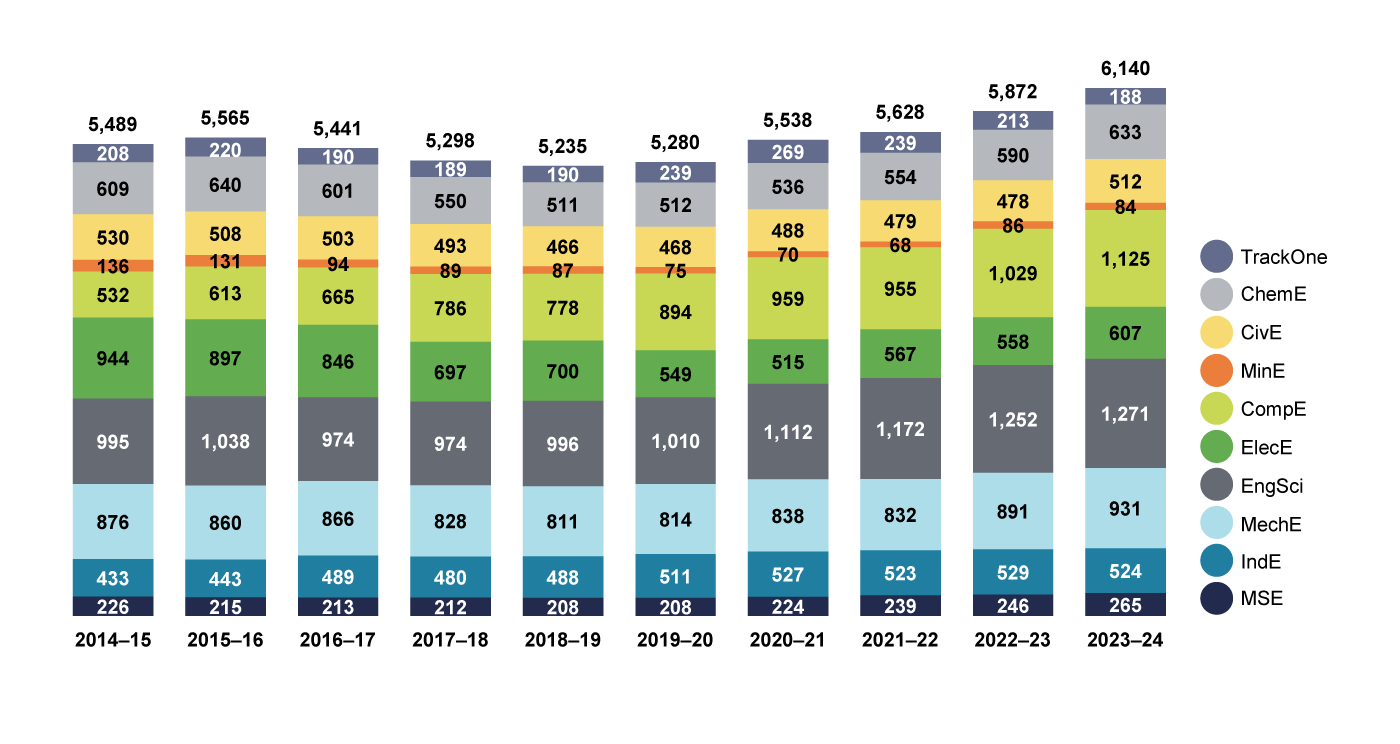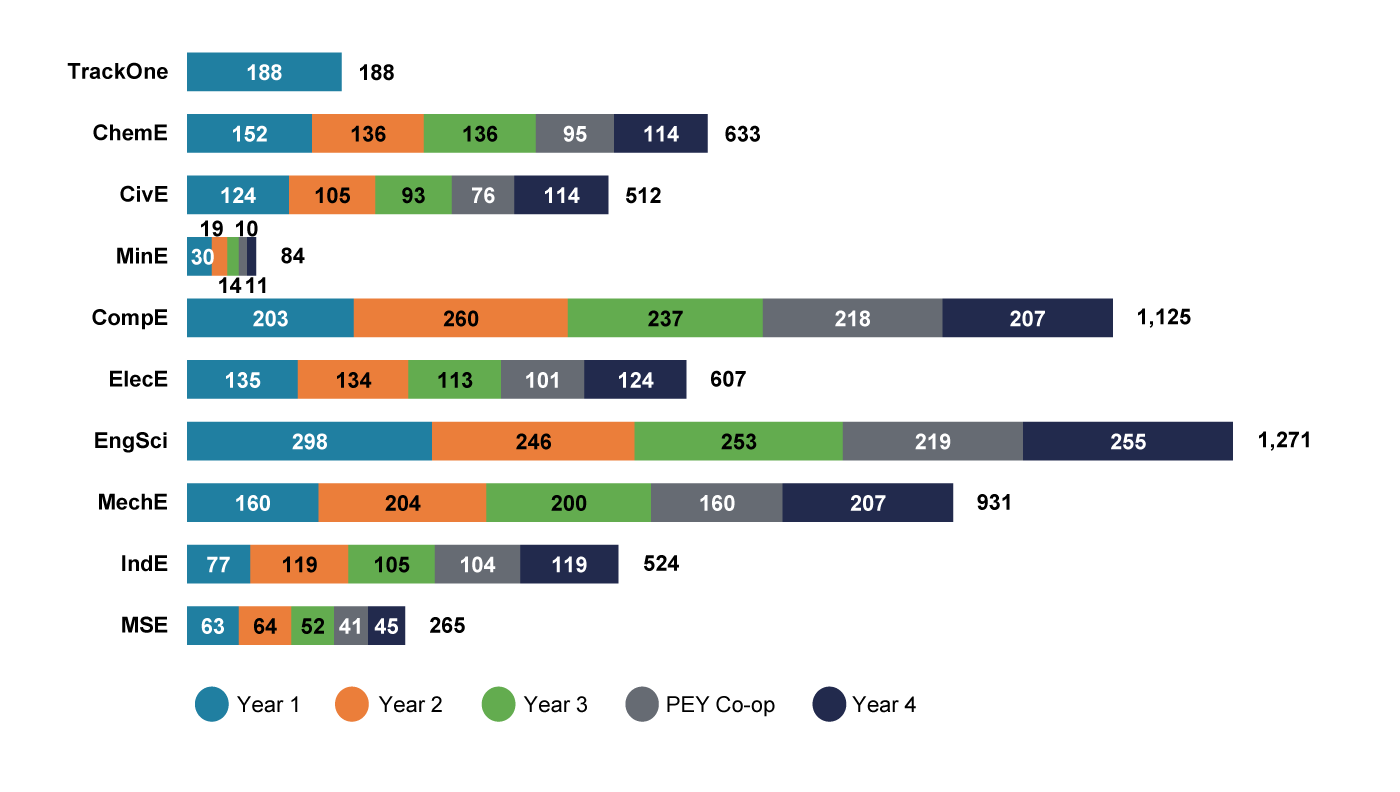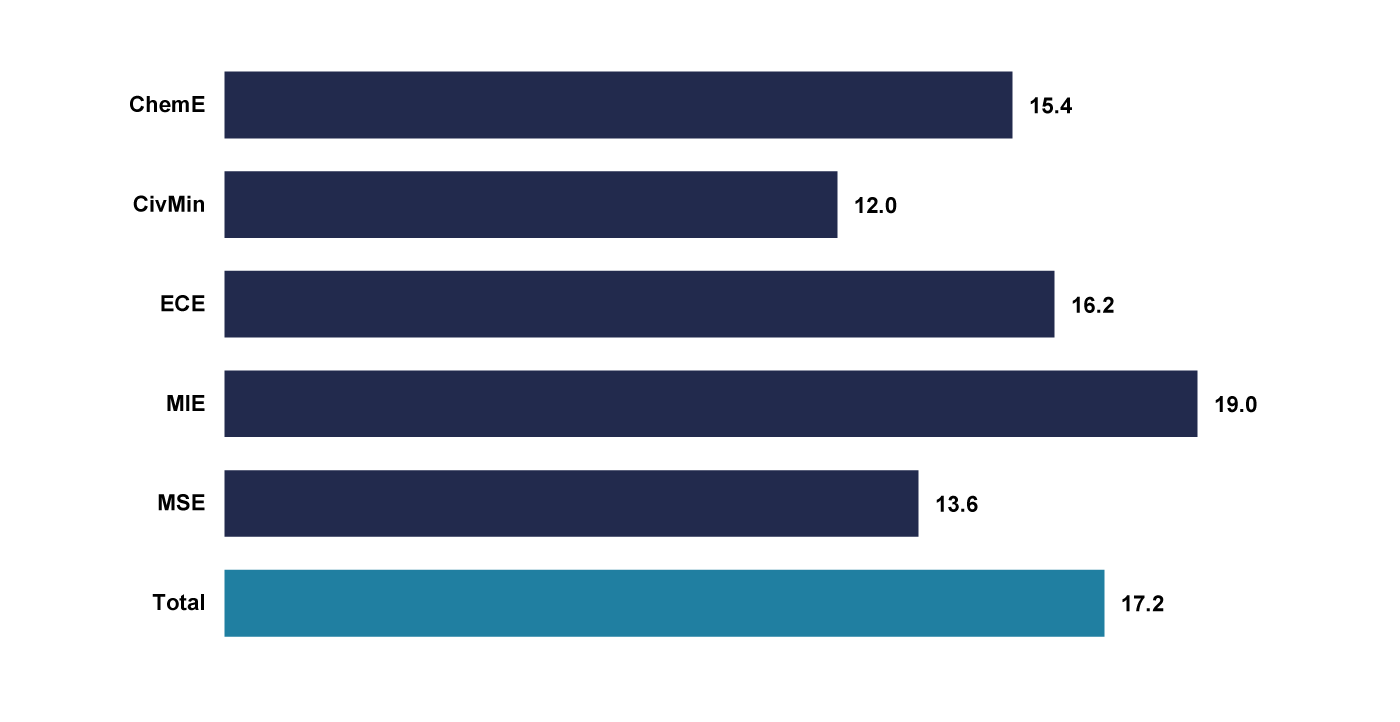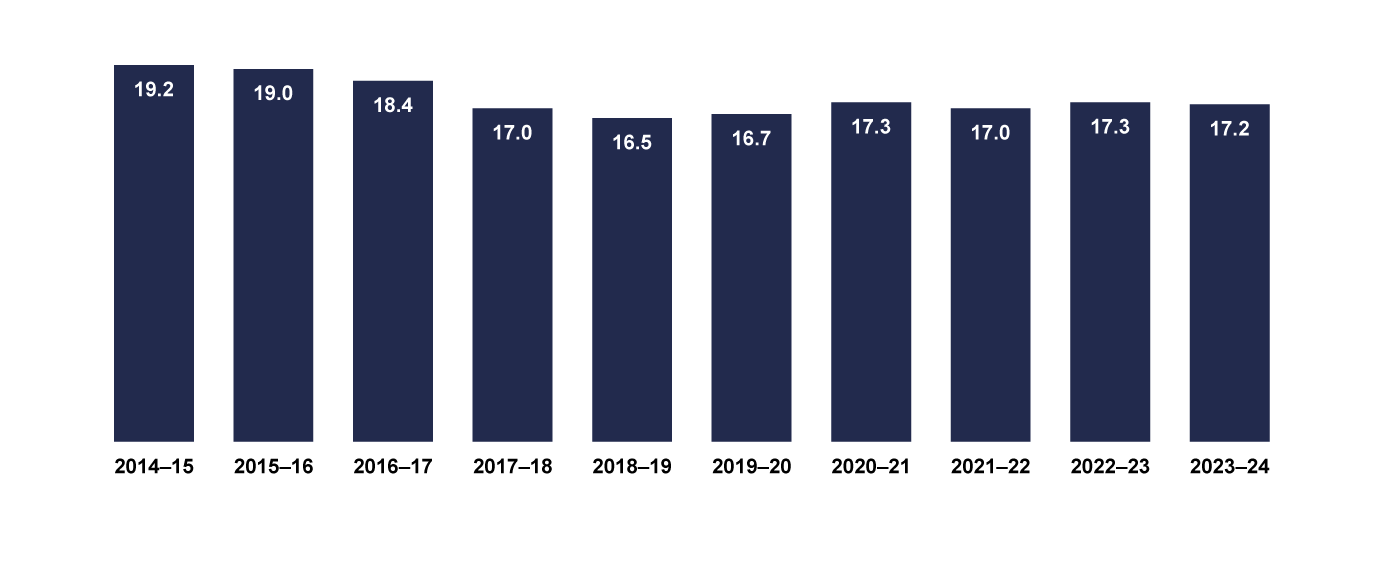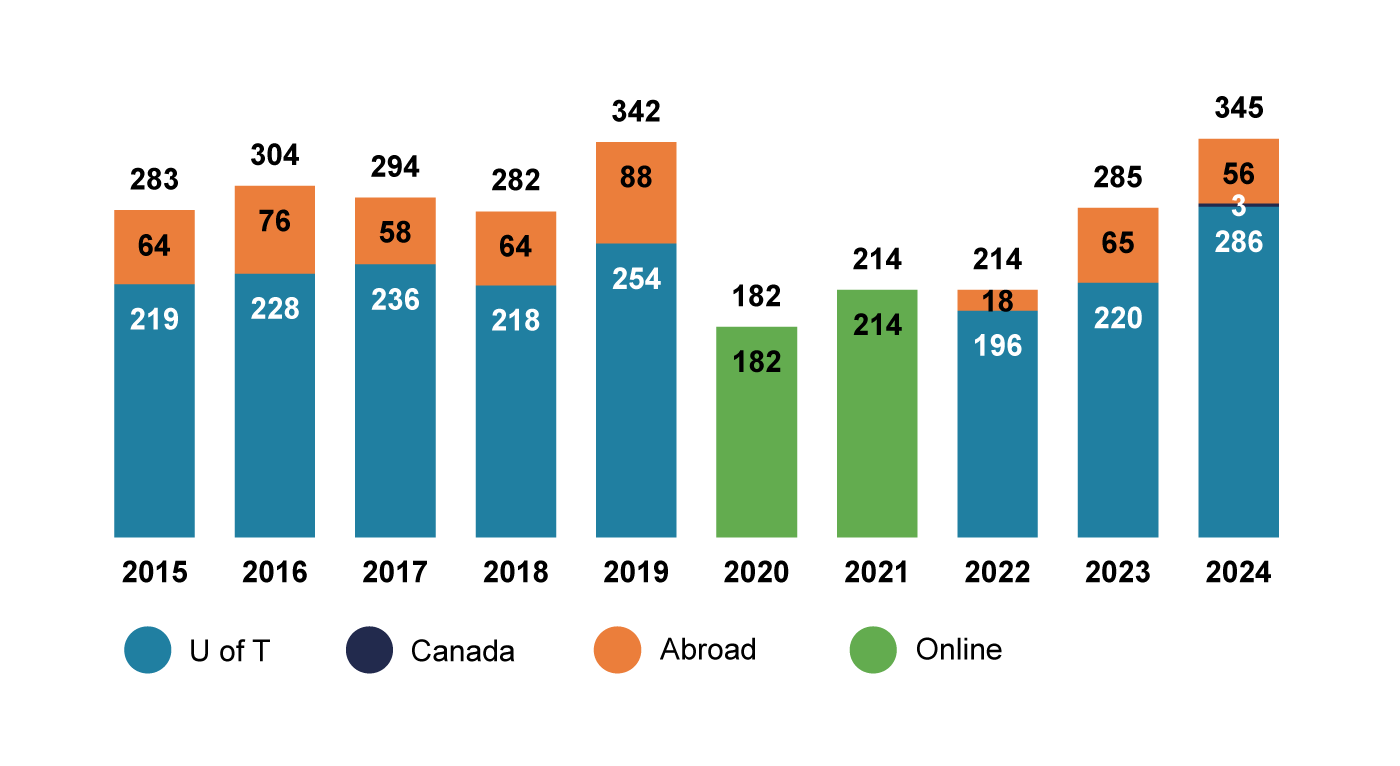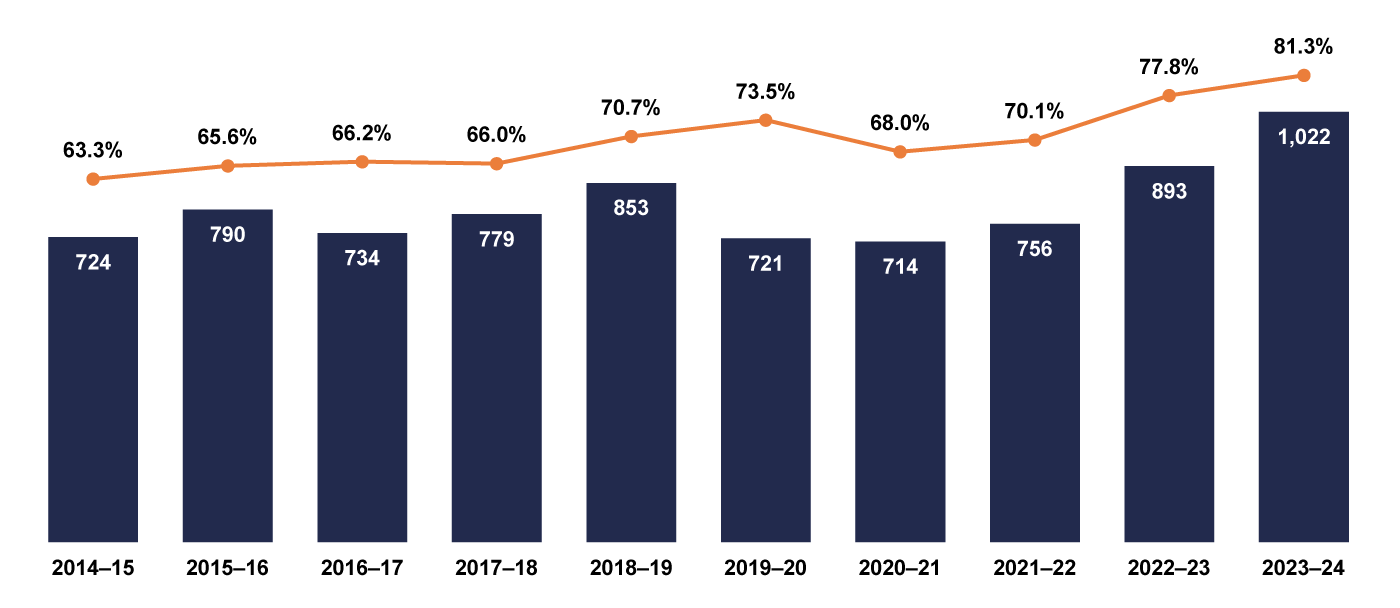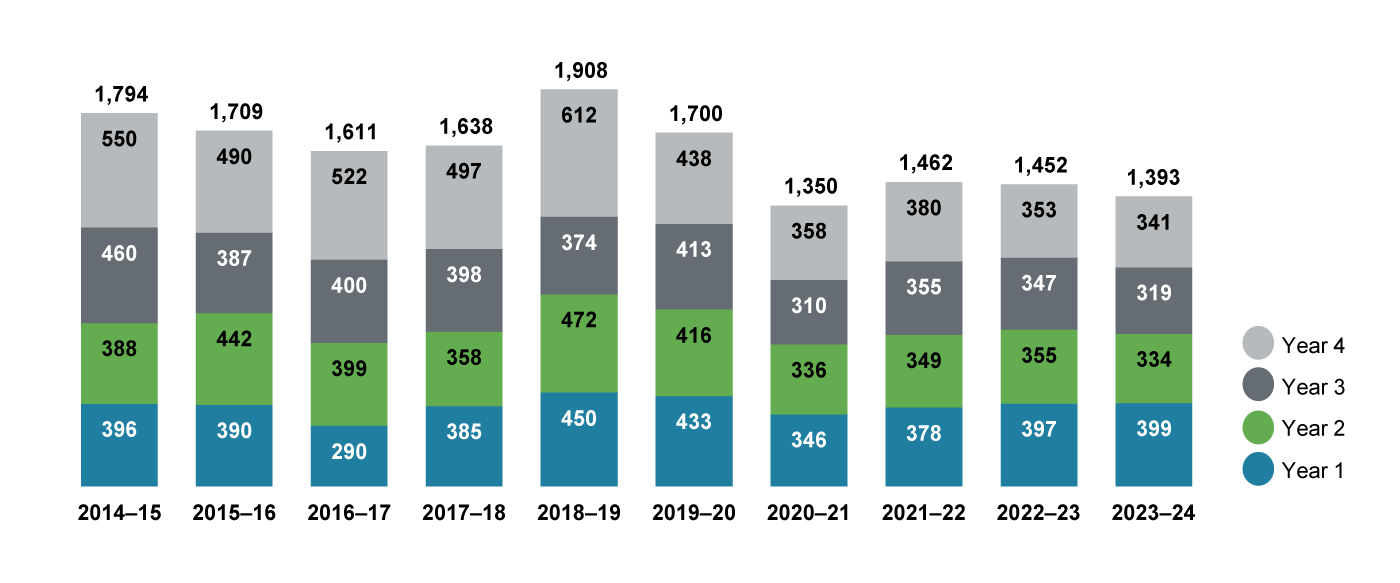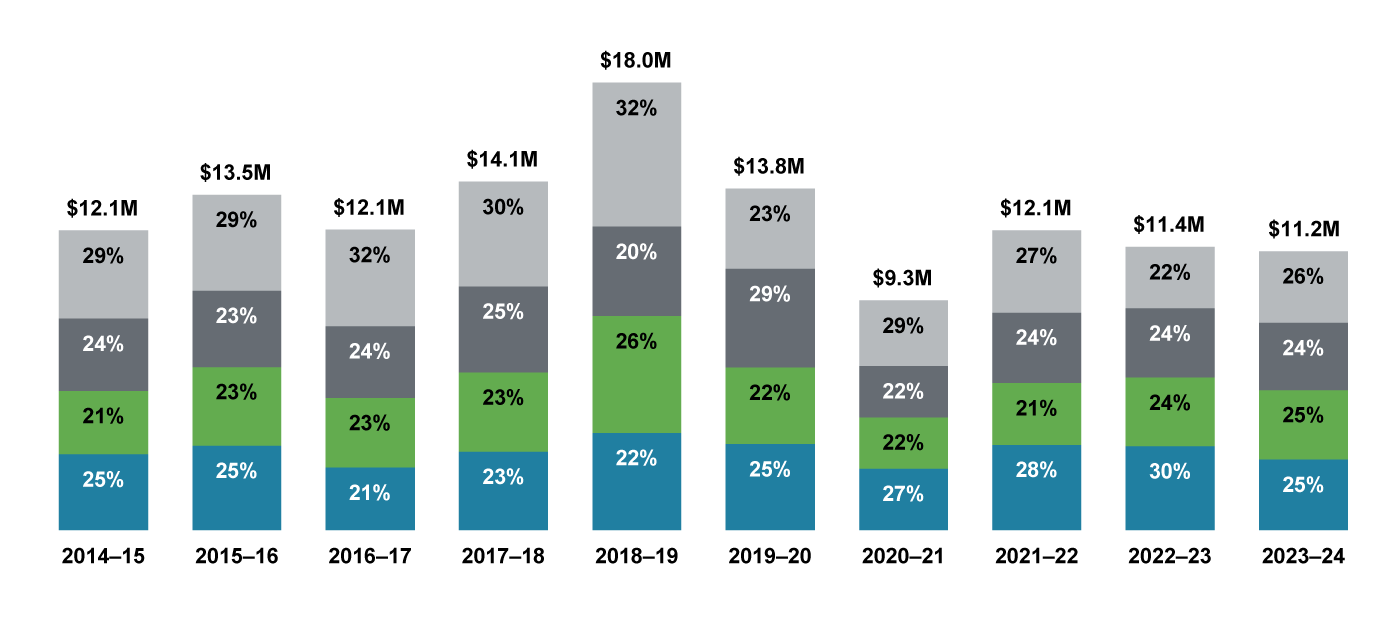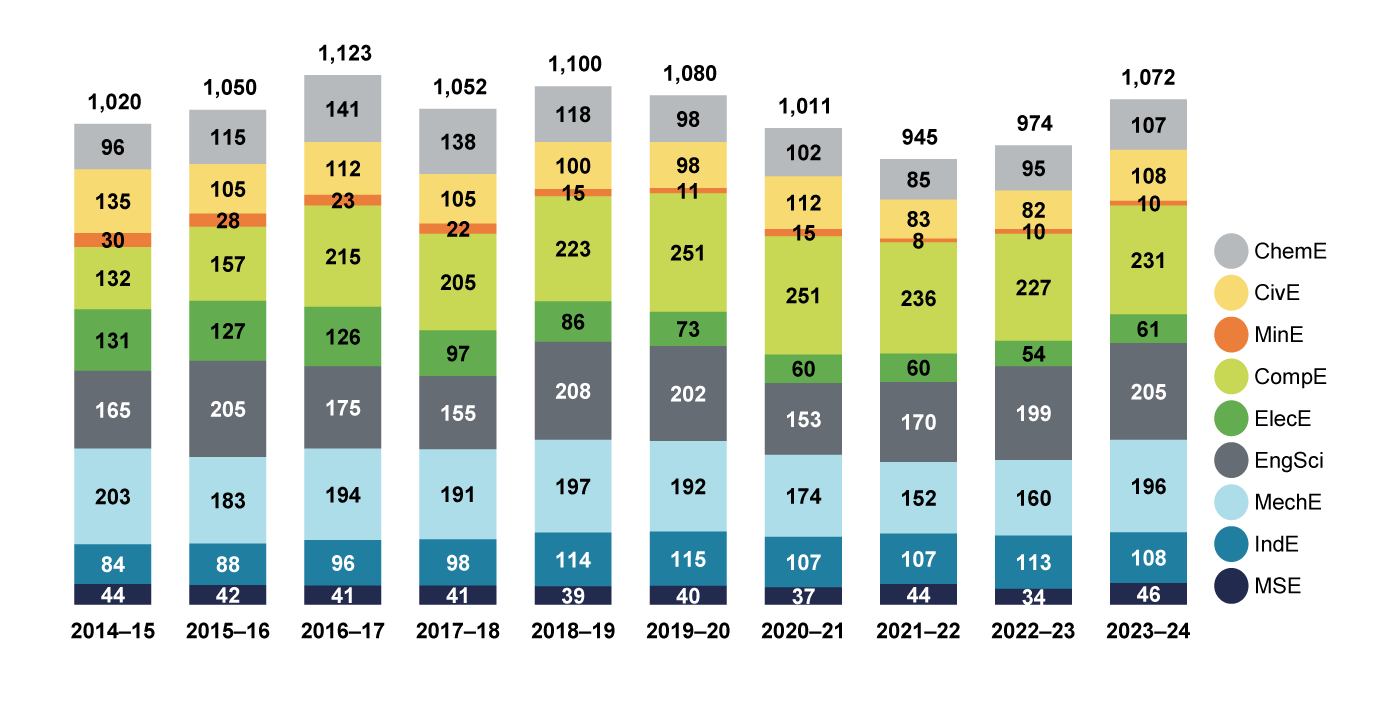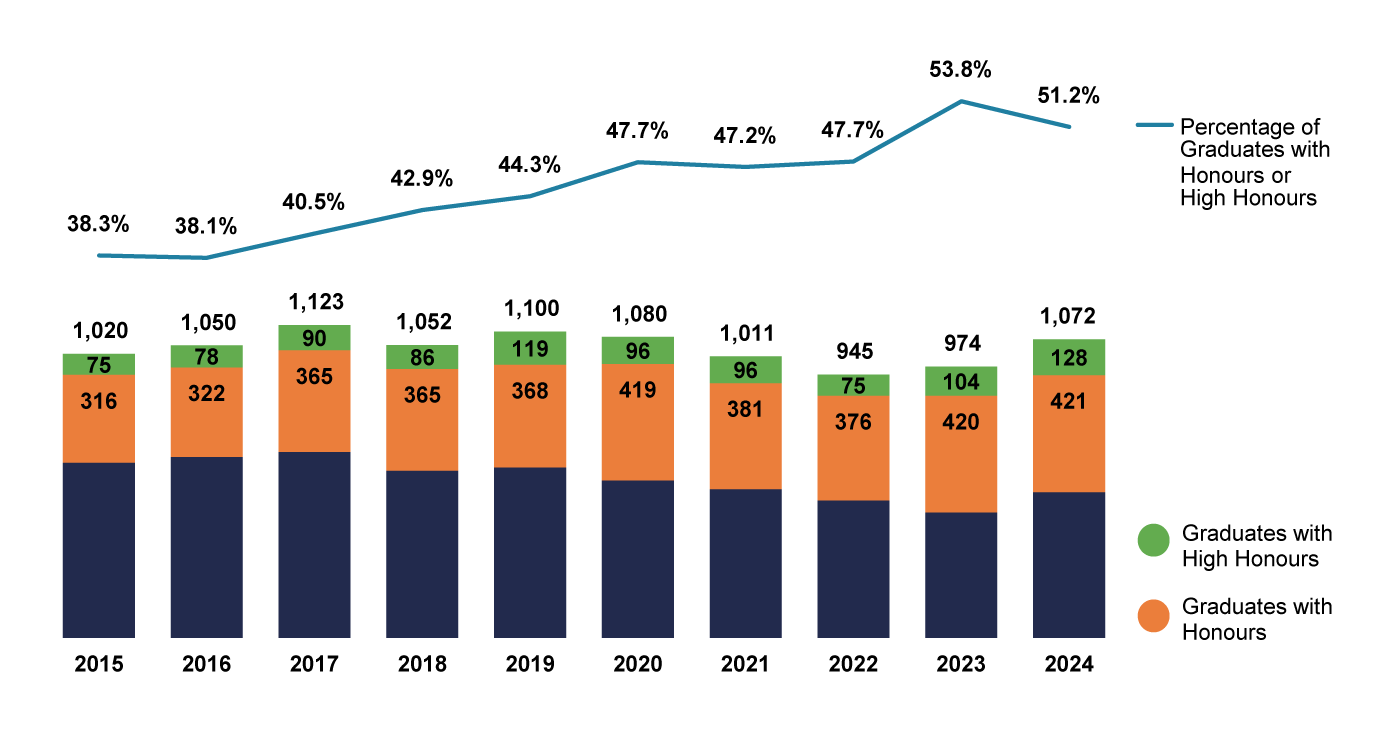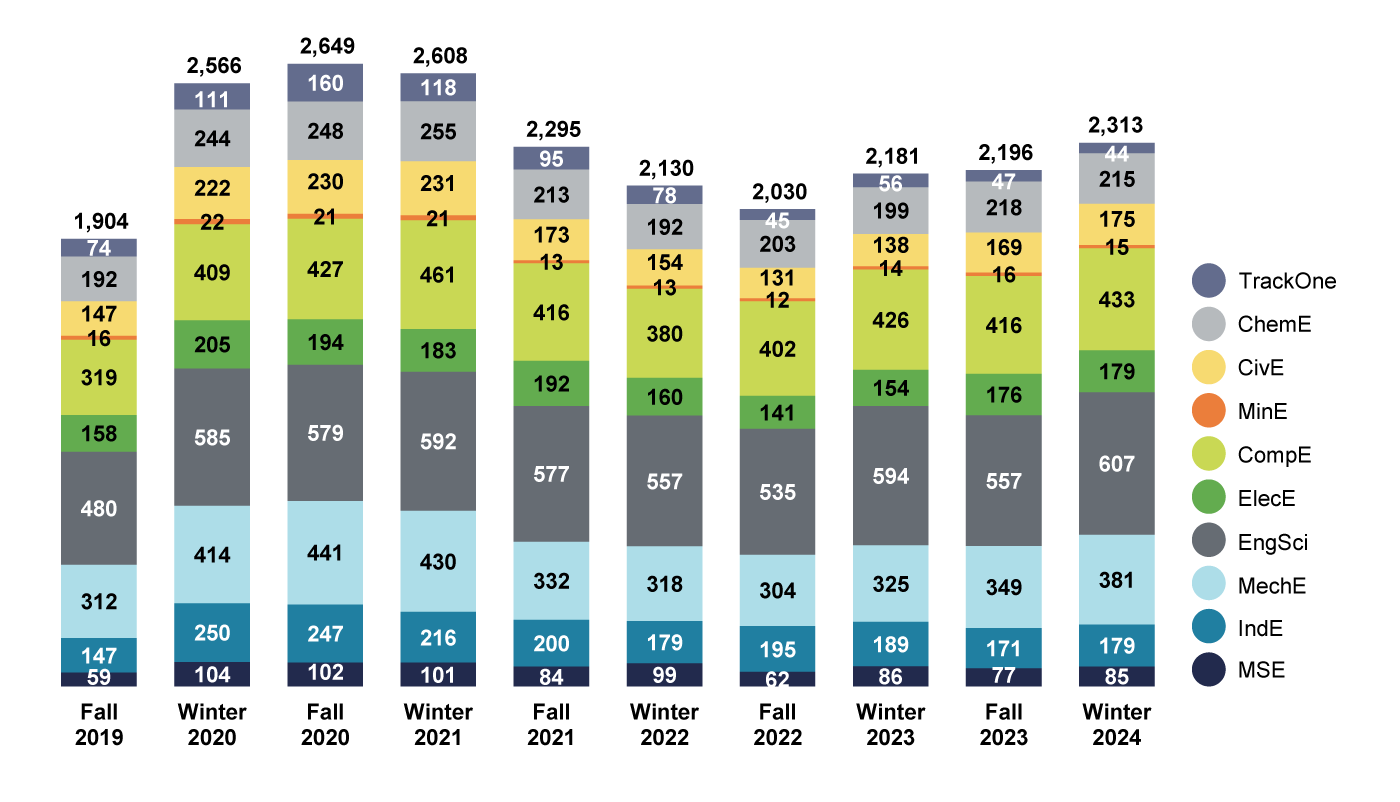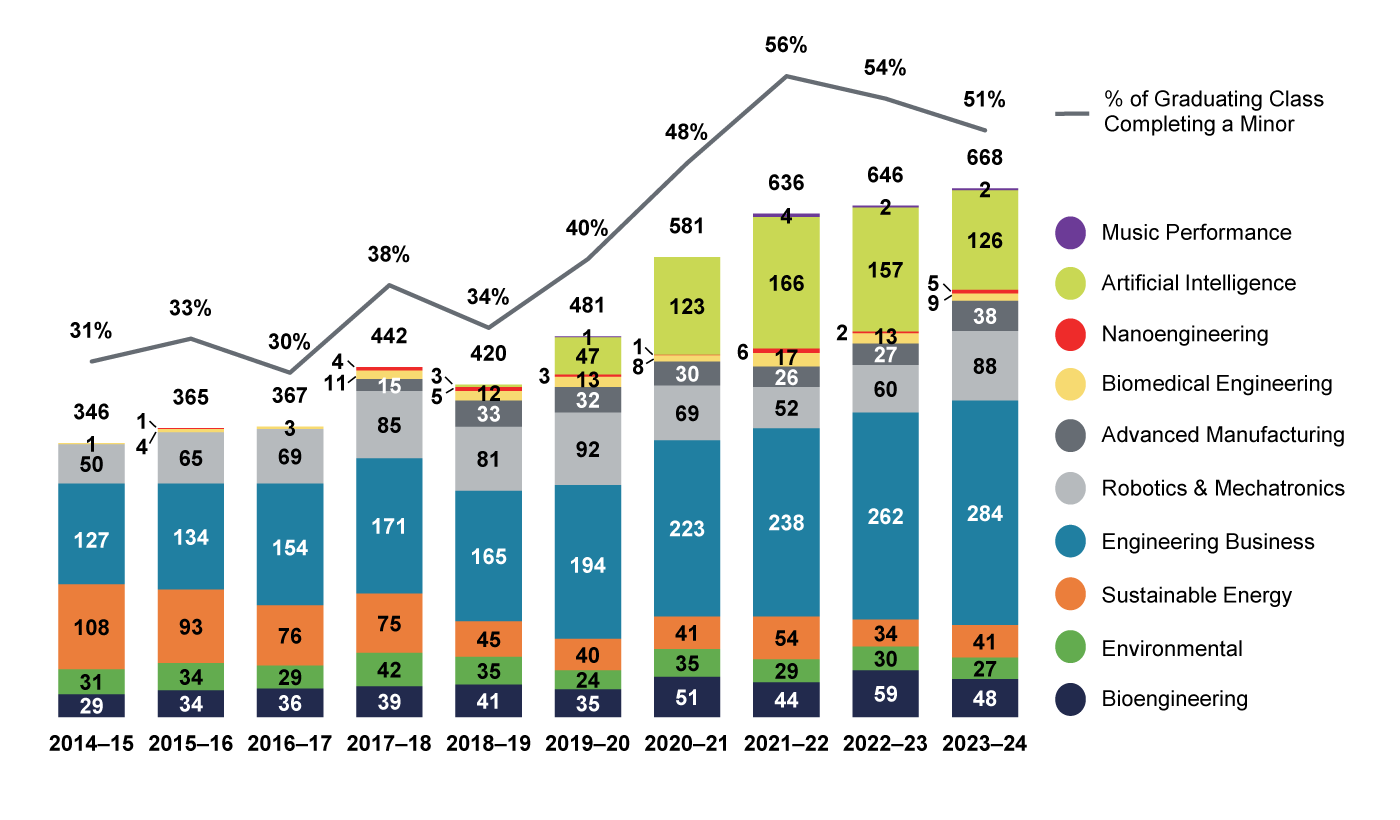By the Numbers 2024
Explore comprehensive visual data about the Faculty in this companion piece to our 2024 Impact Report
Chapter 1: Undergraduate Studies
Data in this chapter are presented by academic year (September to August) unless otherwise noted.
Facts & Figures
13,592
Applications for Fall 2023 undergraduate admission, the highest in our history
1,022
Students who participated in PEY Co-op, representing 81.3% of those eligible
789
Students who completed at least one minor or certificate, comprising 73.6% of the graduating class.
Figure 1.1a Applications, Offers, Registrations, Selectivity and Yield of First-Year Undergraduates, 2014 to 2023
Student registration counts are shown as of November 1, 2023. Applications and offers are for the fall admissions cycle. Selectivity = offers ÷ applications and represents the proportion of applicants who were offered admission. Yield = registration ÷ offers. Domestic students are defined as citizens (living in Canada or abroad) or permanent residents of Canada.
| Years | Applications | Offers | Registrations | Selectivity | Yield |
|---|---|---|---|---|---|
| 2014 | 10,989 | 3,205 | 1,192 | 0.29 | 0.37 |
| 2015 | 11,418 | 3,126 | 1,205 | 0.27 | 0.39 |
| 2016 | 12,298 | 2,983 | 1,005 | 0.24 | 0.34 |
| 2017 | 12,880 | 3,109 | 1,065 | 0.24 | 0.34 |
| 2018 | 13,272 | 3,380 | 1,062 | 0.25 | 0.31 |
| 2019 | 12,263 | 3,937 | 1,202 | 0.32 | 0.31 |
| 2020 | 11,807 | 4,806 | 1,359 | 0.41 | 0.28 |
| 2021 | 13,188 | 4,298 | 1,259 | 0.33 | 0.29 |
| 2022 | 13,454 | 4,448 | 1,265 | 0.33 | 0.28 |
| 2023 | 13,592 | 4,640 | 1,350 | 0.34 | 0.29 |
Figure 1.1b Applications, Offers, Registrations, Selectivity and Yield of Domestic First-Year Undergraduates, 2014 to 2023
Student registration counts are shown as of November 1, 2023. Applications and offers are for the fall admissions cycle. Selectivity = offers ÷ applications and represents the proportion of applicants who were offered admission. Yield = registration ÷ offers. Domestic students are defined as citizens (living in Canada or abroad) or permanent residents of Canada.
| Year | Applications | Offers | Registrations | Selectivity | Yield |
|---|---|---|---|---|---|
| 2014 | 7,705 | 2,304 | 812 | 0.30 | 0.35 |
| 2015 | 7,588 | 2,239 | 846 | 0.30 | 0.38 |
| 2016 | 8,053 | 2,128 | 734 | 0.26 | 0.34 |
| 2017 | 7,933 | 2,206 | 788 | 0.28 | 0.36 |
| 2018 | 7,791 | 2,350 | 780 | 0.30 | 0.33 |
| 2019 | 7,351 | 2,526 | 821 | 0.34 | 0.33 |
| 2020 | 7,243 | 2,873 | 874 | 0.40 | 0.30 |
| 2021 | 7,927 | 2,697 | 880 | 0.34 | 0.33 |
| 2022 | 8,803 | 2,787 | 899 | 0.32 | 0.32 |
| 2023 | 9,107 | 2,808 | 932 | 0.31 | 0.33 |
Figure 1.1c Applications, Offers, Registrations, Selectivity and Yield of International First-Year Undergraduates, 2014 to 2023
Student registration counts are shown as of November 1, 2023. Applications and offers are for the fall admissions cycle. Selectivity = offers ÷ applications and represents the proportion of applicants who were offered admission. Yield = registration ÷ offers. Domestic students are defined as citizens (living in Canada or abroad) or permanent residents of Canada.
| Year | Applications | Offers | Registrations | Selectivity | Yield |
|---|---|---|---|---|---|
| 2014 | 3,284 | 901 | 380 | 0.27 | 0.42 |
| 2015 | 3,830 | 887 | 362 | 0.23 | 0.41 |
| 2016 | 4,245 | 855 | 271 | 0.20 | 0.32 |
| 2017 | 4,947 | 903 | 277 | 0.18 | 0.31 |
| 2018 | 5,481 | 1,030 | 282 | 0.19 | 0.27 |
| 2019 | 4,912 | 1,411 | 381 | 0.29 | 0.27 |
| 2020 | 4,564 | 1,933 | 485 | 0.42 | 0.25 |
| 2021 | 5,261 | 1,601 | 379 | 0.30 | 0.24 |
| 2022 | 4,651 | 1,661 | 366 | 0.36 | 0.22 |
| 2023 | 4,485 | 1,832 | 418 | 0.41 | 0.23 |
Figure 1.4a All Undergraduates by Program, 2014–2015 to 2023–2024
Student counts are shown as of November 1, 2023. Includes full- and part-time students and those working full time through the Professional Experience Year Co-op Program (PEY Co-op). Does not count students with special (non-degree) status.
Figure 1.4c Enrolment in Engineering Science Majors, 2014–2015 to 2023–2024
Student counts are shown as of November 1, 2023. Engineering Science Majors show only students in Year 3 and Year 4 and do not count students on PEY Co-op. The Nanoengineering major was discontinued in 2017, and the Infrastructure major was discontinued in 2022. The Robotics major was launched in 2015, and the Machine Intelligence major was launched in 2018.
Figure 1.5a Undergraduate Student-to-Faculty Ratios by Academic Area, 2023–2024
Student and faculty counts are shown as of November 1, 2023. For full-time equivalency (FTE), each part-time student is counted as 0.3 FTE. Students with special (non-degree) status or on PEY Co-op are not included. Faculty counts include tenure-stream and teaching-stream faculty.
Figure 1.5b Undergraduate Full-Time Equivalent Student-Faculty Ratios, 2014–2015 to 2023–2024
Student and faculty counts are shown as of November 1, 2023. For full-time equivalency (FTE), each part-time student is counted as 0.3 FTE. Students with special (non-degree) status or on PEY Co-op are not included. Faculty counts include tenure-stream and teaching-stream faculty.
Figure 1.6b Undergraduate Participation in Summer Research Opportunities by Academic Area, 2024
| Research Participation: | U of T | Canada | Abroad | Total |
|---|---|---|---|---|
| ChemE | 27 | 2 | 29 | |
| CivE & MinE | 22 | 1 | 23 | |
| ECE | 62 | 10 | 72 | |
| EngSci | 99 | 3 | 35 | 137 |
| MIE | 59 | 6 | 65 | |
| MSE | 10 | 1 | 11 | |
| TrackOne | 7 | 1 | 8 | |
| Total | 286 | 3 | 56 | 345 |
Figure 1.7a Number of Engineering Undergraduate Students Participating in PEY Co-op with Percentage Participation, 2014–2015 to 2023–2024
Percentage participation is calculated by dividing the number of completed PEY Co-op positions by the number of eligible students (i.e. the third-year cohort from the previous year).
Figure 1.7b Number of Canadian and International PEY Co-op Positions, 2014–2015 to 2023–2024
For 2020–2021 and 2021–2022, students’ ability to participate in U.S.-based PEY positions was limited by pandemic-related travel restrictions. Some U.S. companies responded by making offers through their Canadian offices, which were recorded as Canadian positions.
| Year | Canadian Positions | U.S. Positions | Other International Positions | Total Positions |
|---|---|---|---|---|
| 2014–15 | 663 | 42 | 19 | 724 |
| 2015–16 | 711 | 50 | 29 | 790 |
| 2016–17 | 669 | 49 | 16 | 734 |
| 2017–18 | 713 | 48 | 18 | 779 |
| 2018–19 | 768 | 64 | 21 | 853 |
| 2019–20 | 673 | 37 | 11 | 721 |
| 2020–21 | 672 | 22 | 20 | 714 |
| 2021–22 | 714 | 10 | 32 | 756 |
| 2022–23 | 866 | 20 | 7 | 893 |
| 2023–24 | 950 | 46 | 27 | 1023 |
Figure 1.7c Number of PEY Co-op Employers, 2014–2015 to 2023–2024
| Year | PEY Co-op Employers who Hired Engineering Students |
|---|---|
| 2014–15 | 317 |
| 2015–16 | 310 |
| 2016–17 | 337 |
| 2017–18 | 318 |
| 2018–19 | 368 |
| 2019–20 | 357 |
| 2020–21 | 310 |
| 2021–22 | 361 |
| 2022–23 | 410 |
| 2023–24 | 381 |
Figure 1.8b Total Value of Undergraduate Financial Assistance and Percentage Distributed by Year of Study, 2014–2015 to 2023–2024
Data comes from the Student Accounts Reporting Cube
| Year 1 | Year 2 | Year 3 | Year 4 | Total | |
|---|---|---|---|---|---|
| 2014–15 | $3,051,051 | $2,556,557 | $2,924,580 | $3,552,571 | $12,084,759 |
| 2015–16 | $3,405,862 | $3,168,523 | $3,083,866 | $3,866,417 | $13,524,668 |
| 2016–17 | $2,515,907 | $2,811,114 | $2,902,240 | $3,880,873 | $12,110,134 |
| 2017–18 | $3,163,089 | $3,197,041 | $3,469,378 | $4,224,204 | $14,053,712 |
| 2018–19 | $3,916,442 | $4,720,283 | $3,603,565 | $5,809,293 | $18,049,584 |
| 2019–20 | $3,471,879 | $3,079,401 | $3,988,081 | $3,233,638 | $13,773,000 |
| 2020–21 | $2,473,907 | $2,071,947 | $2,074,898 | $2,640,982 | $9,261,734 |
| 2021–22 | $3,435,158 | $2,493,033 | $2,845,083 | $3,313,700 | $12,086,974 |
| 2022–23 | $3,383,676 | $2,767,048 | $2,795,504 | $2,478,222 | $11,424,450 |
| 2023–24 | $2,845,499 | $2,806,623 | $2,710,184 | $2,883,259 | $11,245,566 |
Figure 1.10 U of T Engineering Degrees Awarded by Academic Area Compared with Canadian and North American Degree Totals 2022
Data for this figure is based on Engineers Canada’s Enrolment and Degrees Awarded Report and the American Society of Engineering Educators (ASEE) report. 2022 is the most recent year for which complete data from both these reports is available.
Figure 1.11a Number of Students and Percentage of Class Graduating with Honours, 2015 to 2024
Students are normally eligible to be considered for Honours standing only if they are carrying a full academic load (2.5 credits per session, excluding extra courses) and if the session is not being repeated. During fourth year, a student may reduce their course load in either semester (but not both) and still be eligible for Honours standing, provided the other conditions are met.
Figure 1.11b Number of Students on the Dean’s Honour List by Term and Academic Area, Fall 2019 to Winter 2024
The results for 2020 Winter, 2020 Fall, and 2021 Winter reflect various impacts due to COVID-19 adaptations. Moving all classes to online formats necessitated adjustments both to specific assignments and to overall grading schemes. For 2020 Winter only, students were permitted to apply a Credit or No Credit (CR/NCR) option, rather than a percentage grade, to any of their courses, or even to drop a failed course, after seeing their final grades. Sessional grades used to determine honour status were calculated using only those courses that students chose to have recorded as a percentage grade. A minimum of 4 such percentage grades were required to be considered for the Dean’s Honour List. For the 2020–2021 academic year, the CR/NCR option was discontinued, but the extended Late Withdrawal option was retained. Provision was also made for part-time students to achieve Dean’s Honour List standing. From the 2021–2022 academic year, the Late Withdrawal option was discontinued.
Figure 1.12a Number of Students and Percentage of Graduating Class Completing an Engineering Minor, 2014–2015 to 2023–2024
A total of 668 minors were completed by 548 students in 2023–2024, with many students completing more than one minor. In total, 789 students completed at least one minor or certificate, comprising 74.0% of the graduating class.
Figure 1.13 New Undergraduate Courses Launched, 2023–2024
| Course | Title |
|---|---|
| APS521H1 | Building Organizations: An Engineer's Business Toolkit |
| CIV501H1 | Building Energy Performance Simulation |
| ECE441H1 | Interfacing & Modulating the Nervous System |
| MAT238H1 | Differential Equations and Discrete Math |
| MIE223H1 | Data Science |
| MIE245H1 | Data Structures & Algorithms |
| MIE524H1 | Data Mining |
| MIE535H1 | Electrification Via Electrcity Markets |
| MIN201H1 | Mineral Engineering Field Excursion |
| MIN350H1 | Mineral Economics |




